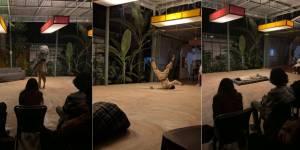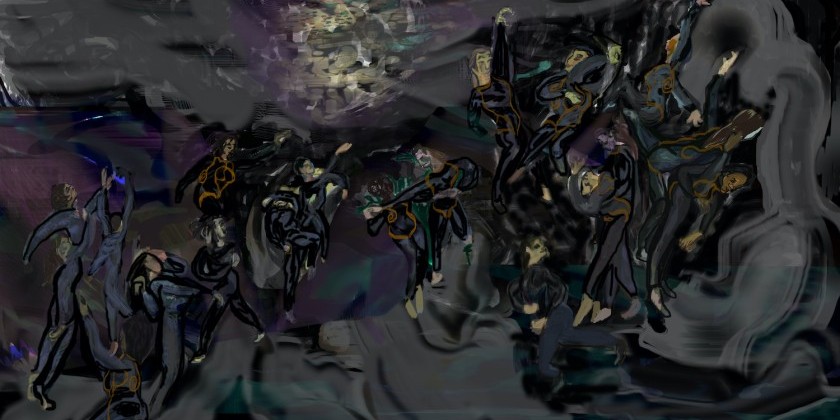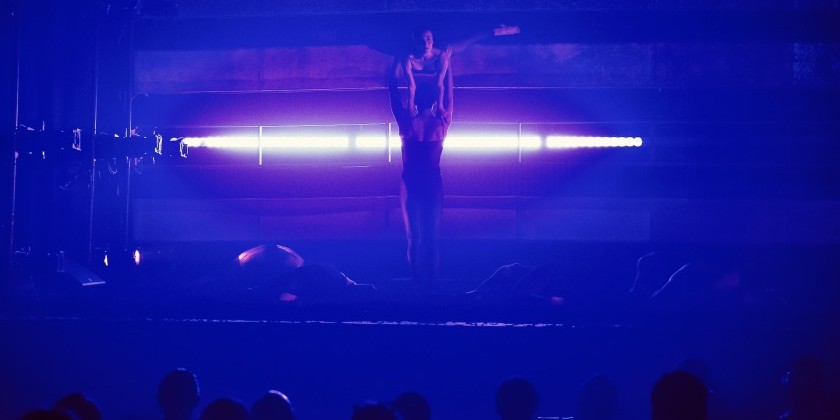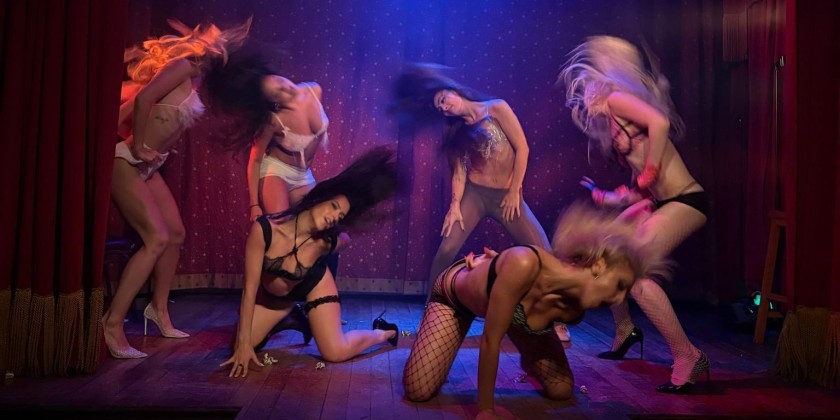AUDIENCE REVIEW: Dance Theatre of Harlem Returns to City Center; Program B

Company:
Dance Theatre of Harlem
Performance Date:
Friday, April 10th, 2015.
Freeform Review:
Dance Theatre of Harlem's return to City Center was met with ecstatic hurrahs from a truly appreciative audience to which, the company was mostly more than equal. Not so, unfortunately, with the opening of Program B, George Balanchine's "Agon". Of course we all know the significance of this piece: the first 'modern ballet' and one whose famous pas de deux was choreographed on DTH's founder, the great Arthur Mitchell. Set to an idiosyncratically expansive score by Balanchine’s mentor, Igor Stravinsky, this stylish piece has a way of responding to the music that is both astounding and fun. And therein lies the problem. DTH's performance on this evening was flat; it lacked wit and sex. The dancing was far too polite; the dancers lacked bite and speed in their attack. But this is to be expected when dancing to canned music. Due to the ploddingly slow recording selected for this performance, movement that should have swooped and dived into the next phrase had to be sustained beyond what the dancers were capable. Watching this slowed down performance was akin to listening to a person speak a foreign tongue while over-elongating the vowels. The one instance in which a dancer mastered the proceedings was during Chyrstyn Fentroy’s interpretation of the Bransle Gay. Ms. Fentroy possesses a splendid technical base and- ‘Oh! What a balance!’- which she deployed to great effect as she toyed with the music like a preening cat, filling each stretch with her majestic presence and a delightful amplitude, all the while dominating her dual partners in ways that proved the aphorism ‘Ballet is Woman’ true. This performance was on par with best of what I have seen at NYCB in recent years. In Ms. Fentroy’s hands, what Mr. B intended finally came to be. Hopefully the rest of the company members will soon lose their reverence for this material and learn to dig in.
Following a much too long intermission, we returned with the company debut of Nacho Duato’s “Coming Together”. I wish that the dancers performed Balanchine’s work the way they did this piece. Finally, all sense of ‘this is holy material’ was dropped and the dancers got down to doing what they clearly love: moving! Though tricked out and repetitive, both in its musical and choreographic structure, this piece contains enthralling dance sequences which the dancers gleefully devoured- particularly the company’s star dancers, the effortlessly dazzling Ashley Murphy and the virtuosic Da’ Von Doane (their repeated whip turns are not to be missed). “Coming Together” does not offer much in terms of thought- it feels more like a flashy set of non sequiturs that have been strung together and layered atop one another- a common choreographic device for Duato, though there seemed to be a glib motif present in the costuming: each dancer had a letter emblazoned upon his or her shirt that, when the dancers finally came together, spelled out the phrase “I THINK”. I don’t think that there was much thought put into the construction of this work at all beyond, ‘Wouldn’t it be cool if we did this and that, and then repeated it?’ Predictably the piece finished where it began (this is Duato, after all), with a tacked on ending which found the dancers rushing downstage in a line towards the audience. Again, not very thoughtful, though exciting all the same, thanks to the dancers.
Christopher Huggins’s “In the Mirror of Her Mind”, which set a trio of men around Ms. Murphy, offered a number of pretty pictures that amounted to very little before abruptly ending with Ms. Murphy breaking down into sobs. I must have missed something, though I think that the real problem is that Huggins did not have anywhere to go. All the same, it was a pleasure to see Ms. Murphy partnered by Mr. Doane again. While Ms. Murphy is marvelous to behold, it was in Mr. Doane’s capable hands that the piece was elevated to something more. Whatever Mr. Doane has, his fellow male dancers sorely need to emulate ‘it’. There is a sense of authoritative manliness and comfort that exudes from this dancer and automatically puts one at rest, regardless of what perilous feats are demanded of him.
The less said about Robert Garland’s “Return”, a pandering array of basic ballet steps set to classic RnB tunes, the better. As my viewing partner remarked, ‘It all felt like a college dance routine gone on too long’. Though introduced by Dance Theatre of Harlem's gracious artistic director, Virginia Johnson, as being ‘What we are really about’, I would argue that the company is capable of and certainly should be about so much more than what Garland had the dancers execute. I don’t think that there is anything unsound with the concept of setting ballet to popular tunes (Twyla Tharp does it all the time) or in adapting ballet steps to fit the musicality and style of popular social dance (again, Twyla Tharp), however one would certainly hope for something more challenging and more inventive. At any given point during "Return" the dancers could be found sassily tip walking across stage as a way of transitioning into their next step. It was all so obvious in its banality that I could feel ‘5-6-7-8’ flashing in my head as an announcement for the next movement. Every moment was broadly telegraphed to the audience with a vacant grin of ‘Gee, look what I can do’. Once again, Mr. Doane enlivened the material in ways that his fellow dancers could not. Perhaps it is in his go for broke approach no matter the quality of material. Otherwise a general sense of unease and- dare I say it- embarrasment seemed to permeate amongst the men. It is painful to speak so poorly of any company’s resident choreographer, however, the dancers deserve so much more than this and if Dance Theatre of Harlem is to return to its former glory, it has to do better. Though the audience cheered every moment, I would caution that giving the spectators what they think they want quickly leads to artistic stagnation.











